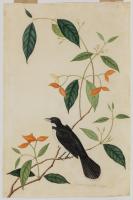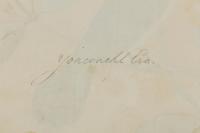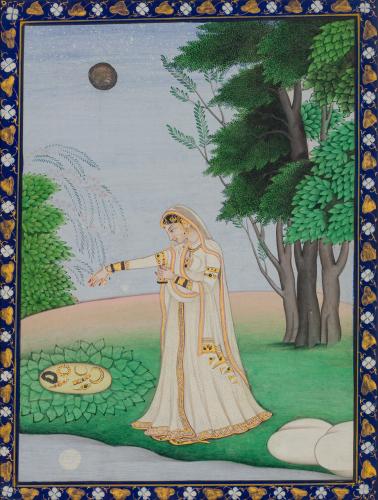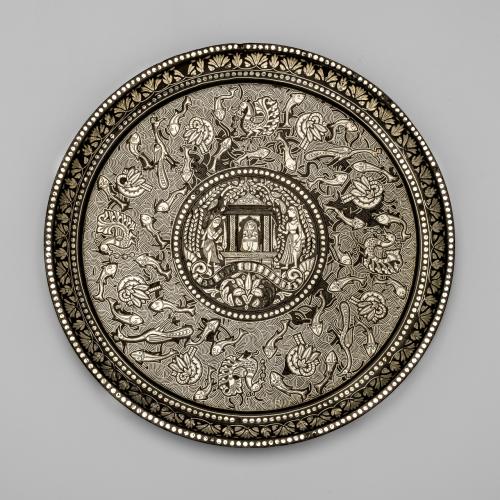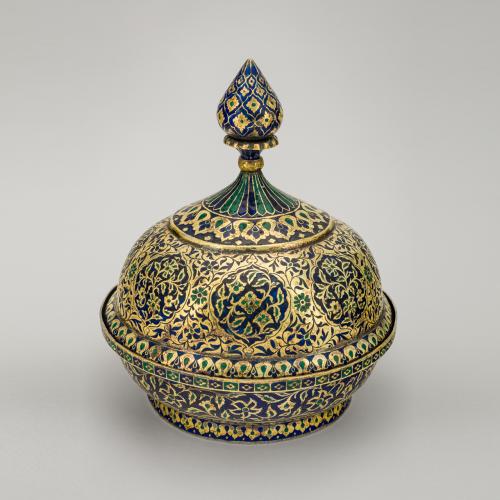
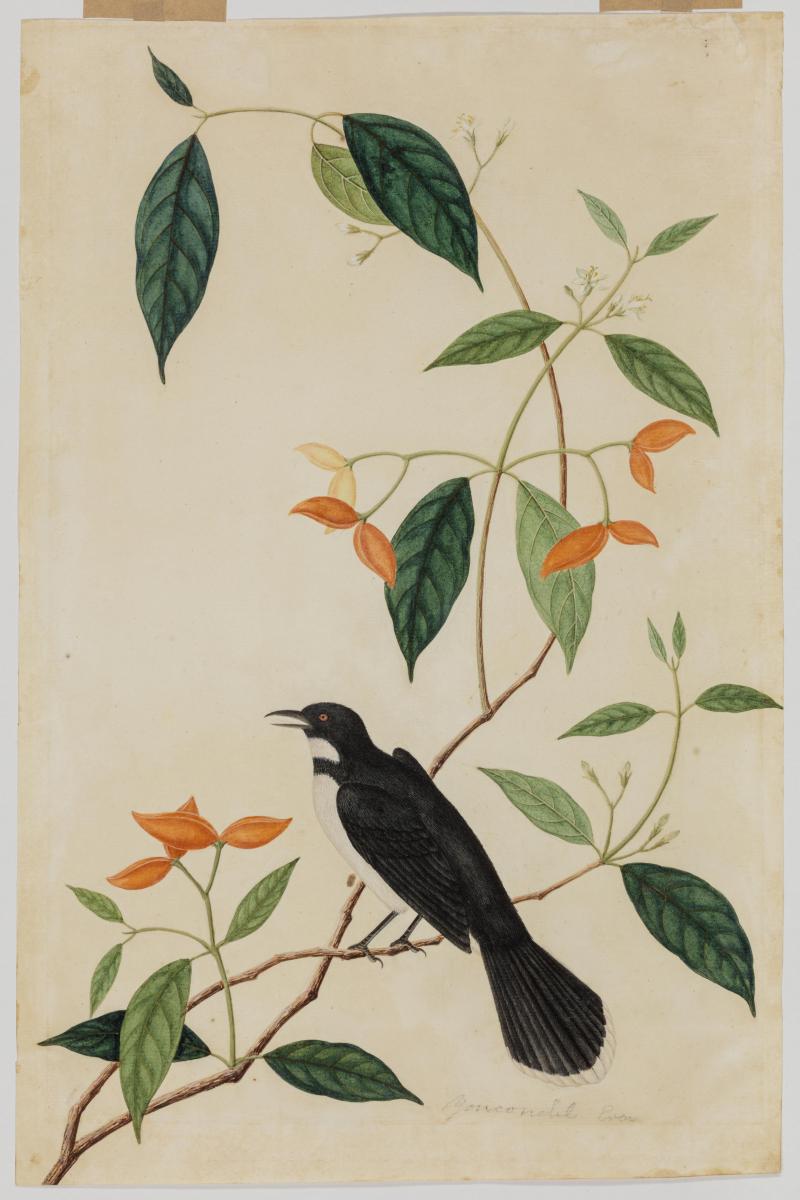
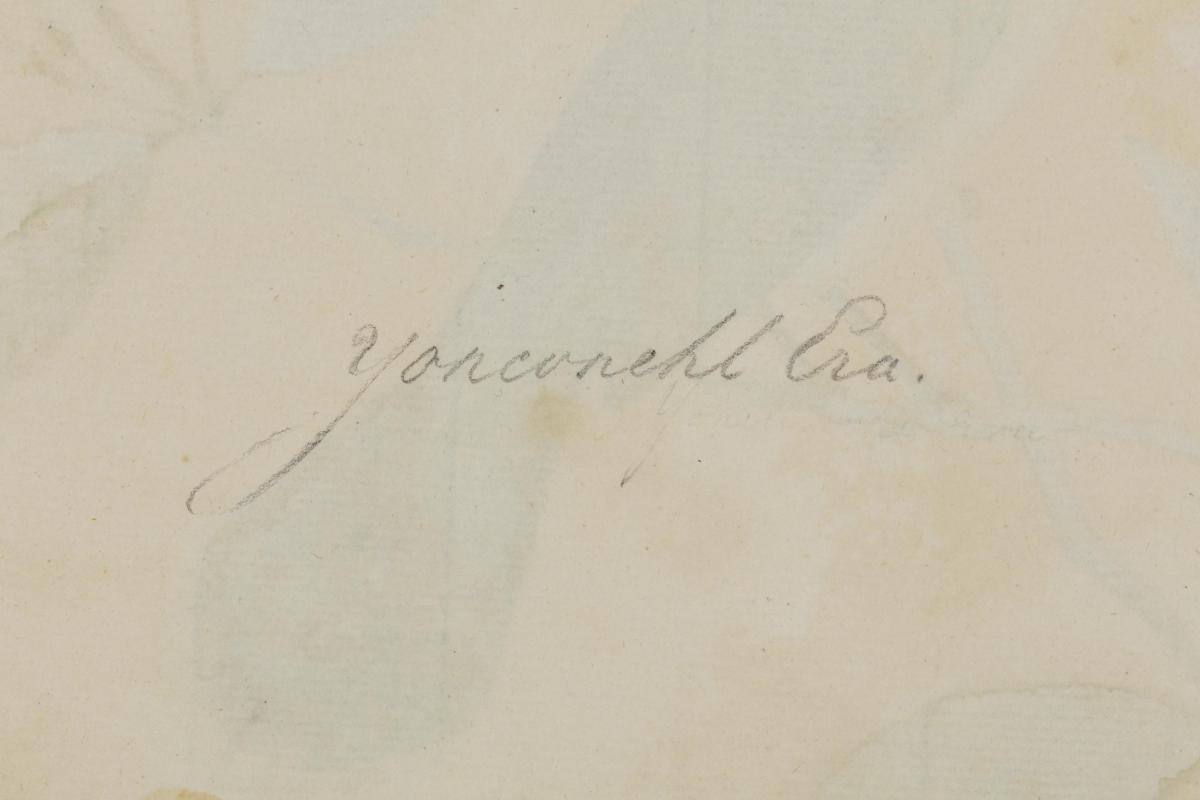
Price on application
This object is eligible for a Certificate of BADA Provenance
The BADA Standard
- Since 1918, BADA has been the leading association for the antiques and fine art trade
- Members are elected for their knowledge, integrity and quality of stock
- Our clients are protected by BADA’s code of conduct
- Our dealers’ membership is reviewed and renewed annually
- Bada.org is a non-profit site: clients deal directly with members and they pay no hidden fees
Study of a Malaysian Pied Fantail (Rhipidura Javanica).
Malacca, Malaysia, late 18th century to early 19th century,
40.5cm high, 26.5cm wide,
Pencil, pen and ink and watercolour with gum Arabic heightened with bodycolour on English paper, watermarked ‘I Taylor 1795’.
Provenance: North American private collection,
The meandering stems of a banana bush (Tabernaemontana pandacaqui) affords an elegant perch for a Malaysian pied fantail (Rhipidura javanica). This beady-eyed species is known for its restless nature, frequently swishing its tail from side to side whilst engaged in dextrous aerial feats. Residing in tropical lowland forests it is common throughout a number of Southeast Asian countries. Depicted with an open beak, the fantail appears to be in mid-song as though calling to a mate.
Exceptionally fine brushstrokes have been employed to demarcate the black feathers, while discreet hints of deep greens create a shimmering quality to the plumage. Exquisite details also appear in the depiction of the flora; the intricate venation on the underside of leaves, stamens emerging from delicate flowers and delightfully vivid pairs of orange fruits. Such a graceful work has undoubtedly been executed by an extremely accomplished hand.
The composition of this painting is almost identical to an illustration in the William Farquhar Collection of Natural History Drawings, in the National Museum of Singapore (ac. 1995-03228). Farquhar arrived in Malacca as an Engineer in 1795 and later became Resident and Commandant of Malacca from 1803-1818 and Singapore from 1819-1824. A keen naturalist with a particular fondness for Malaysian birds, he kept a number of species at his home. Farquhar commissioned at least two Chinese artists to paint all manner of flora and fauna. These were completed on English paper, some of which included the ‘I Taylor’ watermark. The present work is watermarked ‘I Taylor 1795’ indicating the paper is no older than this date and was concurrent with Farquhar’s time in Malacca. The work also bears a pencil inscription, which appears to read ‘Jancunehl Gia.’ This may have been a Romanised mistranslation of the Jawi inscription on the Farguhar collection work; Jangkuci Gila. Romanised Malay names appear in pencil on most of the Farquhar paintings, even in the absence of a Jawi inscription. The current work also bears a pencil outline, visible around the bird’s tail. Farquhar’s artists were required to sketch outlines before painting and evidence of pouncing and silverpoint outlines appear on many of the works. Such parallels hint at the possibility that the current work may have been commissioned by Farquhar, who is known to have sent copies of some paintings to the Asiatic Society of Bengal in Calcutta.
What remains unquestionable is the consummate skill demonstrated in both works. Rendered with an impressive display of painterly technique, they truly encapsulate the diverse riches afforded by Malaysian natural history.
Further Literature:
Karina H. Corrigan. 2004. “Chinese Botanical Paintings for the Export Market”, The Magazine Antiques, Vol. 165; part 6, pp. 92-101.
Laura Dozie, (ed.). 2010. Natural History Drawings, The Complete William Farquhar Collection, Malay Peninsula 1803-1818. Singapore: National Museum of Singapore.
G.G. Khim. 1999. The William Farquhar Collection of Natural History Drawings. Singapore: Goh Geok Khim.
The BADA Standard
- Since 1918, BADA has been the leading association for the antiques and fine art trade
- Members are elected for their knowledge, integrity and quality of stock
- Our clients are protected by BADA’s code of conduct
- Our dealers’ membership is reviewed and renewed annually
- Bada.org is a non-profit site: clients deal directly with members and they pay no hidden fees


